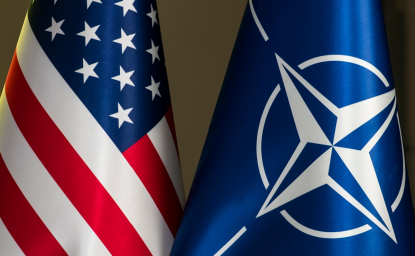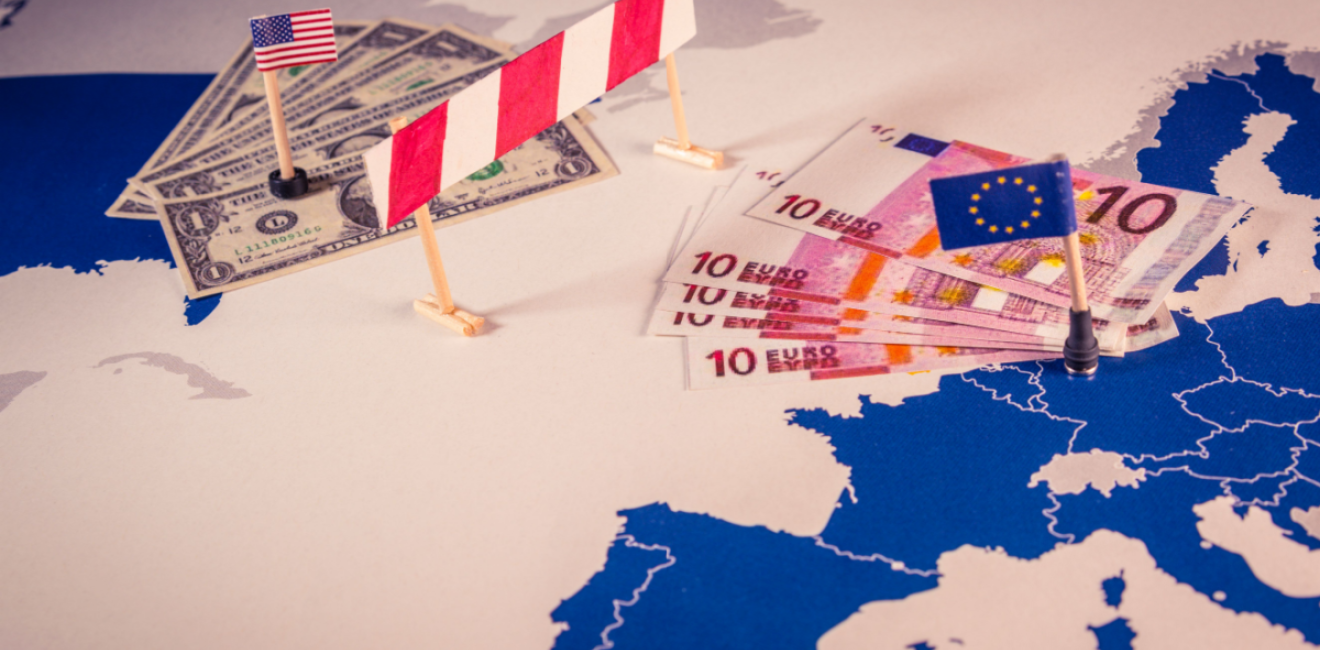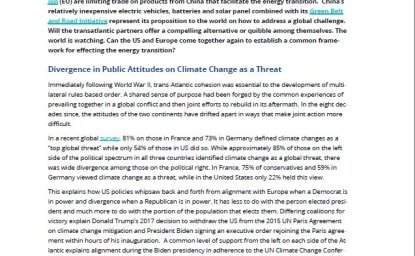The European Union may have temporarily dodged a bullet when President Trump imposed new tariffs on China, Mexico and Canada, but this respite is likely to be very short-lived.
As the President himself said “Am I going to impose tariffs on the European Union? ...Absolutely. They don’t take our cars, they don’t take our farm products, essentially, they don’t take almost anything. And we have a tremendous deficit with the European Union. So, we’ll be doing something very substantial with the European Union.”
Trans-Atlantic trade spats are nothing new. The 1965 “Chicken War,” which saw President Lyndon Johnson respond to European import restrictions on chickens with a 25% duty on imported trucks—a shelter from competition that gave rise to the explosion in pickup sales and which remains in place today.
Today the picture is far more complex, with the landscape of possible points of conflict spreading over multiples fronts, some commercial and others not. There are at least seven possible fronts of latent transatlantic content—three trade fronts, two regulatory fronts, and two security fronts. The fronts are all significant but also hold options for resolution.
Trade Surplus Front
President Trump views trade deficits as an indicator of unfair practices. The US goods and services trade deficit with the European Union exceeded $130 billion in 2022. While the EU believes it can address the issue simply by purchasing larger quantities of liquified natural gas or agricultural products, while EU companies invest more in production facilities in the US, for President Trump this may not be enough. He may push to address long-standing EU distorting practices.
A major point of contention has long been that while the US imposes a 2.5% tariff on imported cars, the EU has a 10% tariff on US car imports. This creates a significant disadvantage for US automakers in European markets. The EU also has high tariffs on some US agricultural products (such as beef and pork) while the US has lower tariffs on similar EU products.
Steel Aluminum Front
The origins of the latest trade imbroglio date to the first Trump administration, when the president invoked the Kennedy-era national security measure known as Section 232, which allowed tariffs in the name of preserving national security. Using this authority, President Trump in 2018 sought to shield domestic steel and aluminum producers by imposing duties of 25% and 10%, respectively, on the EU, Canada, and Mexico. Those who doubted European willingness to respond may have been surprised when Brussels hammered US exporters of motorcycles, blue jeans, and bourbon—sanctions from which those industries have yet to fully recover.
The Biden administration applied a paper mâché truce by lifting the tariffs—but retaining import quotas on EU steel and aluminum exports—while Brussels lifted its duties on the US imports. The two sides tried to fill out the flimsy accord by agreeing to a broader, “clean” steel agreement that would give preference to those countries with less environmentally harmful production techniques. The deal would also restrict imports produced in non-market economies.
Carbon Border Adjustment Mechanism (CBAM) Front
Yet this broader pact fell apart because the US wanted its steel companies exempt from the EU’s CBAM while Brussels refused to violate WTO rules by simply denying Chinese producers access to the EU market. An uneasy truce settled in, with both side grumbling. That truce expires on March 31, when the tariffs are due to be reimposed. But this time the stakes would be higher.
The EU is also poised to make its CBAM fully active next year, which will mean the application of import tariffs on products such as steel, cement, chemicals, hydrogen, and electricity. Those products manufactured with higher degree of carbon content will face a higher tax. Countries that apply their own carbon pricing system would face lower or no duties. But the US, which does not have national carbon pricing systems, has rigorously opposed any such system.
Digital Platforms Regulations Front
The EU’s emergence as a regulatory superpower which exerts oversight of the global technology industry is also likely to arouse President Trump’s ire. The EU has issued a series of broad regulations, beginning with the General Data Protection Regulation (GDPR), enacted in 2016, that covers data privacy. With America choosing to take a lighter hand in tech regulation, GDPR began a pattern of EU regulations that define the rules of the road in the US. The UK exiting the EU in 2020 removed a moderating voice of caution against excessive regulations from the bloc. Then in 2022, the EU issued a trio of digital regulations–Digital Services Act (DSA), aimed at making online platforms more accountable for the content they host; Digital Markets Act (DMA), regulating large online platforms with significant market power; and the Data Governance Act (DGA) to foster data sharing.
The United States has chosen to apply a lighter hand in regulating tech and EU regulations have been a source of irritation for Washington for years. But the Biden administration eyed the tech industry with suspicion as well. Lina Kahn, the British-born former chair of the Federal Trade Commission, shared many of the same hostile views toward tech as her Brussels counterparts. But she is now gone. President Trump has strong links with the leaders of the world’s most powerful tech companies, and he is likely to be more amenable to their needs and concerns.
Recent EU actions on these regulations are turning up the heat on transatlantic digital tensions. In 2023, the commission levied a fine of 1.2 billion euros on Facebook parent Meta for violating the data privacy of EU citizens. The Digital Markets Act, which came into effect in 2023, focuses on the largest tech “gatekeeper” platforms and whether, in the judgement of the commission, they are engaging in anti-competitive actions. Of these seven companies, five are based in the US and only one (Booking.com) is based in Europe. Meta, Alphabet, Apple, and Amazon are all now under EU investigations for alleged anti-competitive behavior.
Will these investigations be influenced by President Trump’s friendly relations with tech barons and EU fears about how he may react if these companies are fined?
AI Regulations
President Trump has made it clear he feels regulations on artificial intelligence (AI) should not be overly restrictive of innovation. This was reflected in one of his first actions, revoking President Biden’s regulations addressing AI risks. With China’s new DeepSeek AI platform showing it is much closer to US capabilities, this issue will remain center stage. Biden’s last-minute regulations on AI diffusion are also overly restrictive and may attract President Trump’s attention.
Enter the EU’s new Artificial Intelligence Act (AI Act), enacted in 2024. It is the world's first comprehensive legal framework for AI. It aims to ensure that AI systems developed and used in the EU are safe, trustworthy, and respect fundamental rights. Like the Biden regulation Trump revoked, it focuses on risks, not opportunities. It includes provisions for high-risk AI systems, bans on certain AI practices, and rules for general-purpose AI models. American tech companies have delayed AI rollouts in the EU due to the regulation.
NATO/Ukraine Front
President Trump’s threats to leave NATO or disregard an attack on one its members, along with his skepticism on the need to support Ukraine, cause even more heartburn in Brussels than the prospect of a trade war. There are several monetary dimensions to President Trump’s faceoff with Europe on security.
President Trump has increased the target for NATO member defense spending as a percentage of GDP to 5%. Poland and Lithuania have endorsed this level, but many other nations are more hesitant.
When it comes to elevating Europe’s military preparedness, a key focus will be on whether efforts to improve the defense industrial base are optimized at the NATO alliance level or the European level. The EU’s new defense industrial base strategy, while potentially helpful in breaking down barriers within Europe, has a continental protectionist tilt.
Any settlement with Ukraine would also likely require more aid and possibly troops from Europe. It would almost certainly require Europe coming closer to America’s view on releasing frozen assets to fund Ukraine’s reconstruction. President Trump would also keep a keen eye and whether efforts to structure reconstruction lean toward Europe’s benefit.
Greenland Front
President Trump’s desire to obtain Greenland, an autonomous territory of Denmark, adds a new front, one that has met with stiff European resistance. But those who assumed that President Trump’s desire to buy the world’s largest island was a joke have been forced to reassess their position.
His lengthy mid-January phone conversation with Danish Prime Minister Mette Frederiksen was a sobering reminder of the transactional nature of President Trump’s policy making. Moreover, his motivation in pressuring the Danes seems to be based on something other than trade.
Just after his inauguration, President Trump told reporters “Greenland is a wonderful place. We need it for international security. And I’m sure that Denmark will come along—it’s costing them a lot of money to maintain it, to keep it,” the president said.
Should Denmark stick to its guns and keep Greenland out of President Trump’s grasp, and should the president then respond with tariffs, it’s likely the entire EU will have Copenhagen’s back.
Path Forward?
Across all these fronts, Europeans are asking whether US pressure is a negotiating ploy to prod the Europeans to buy more American products and build more plants in the US or is it something else entirely. Brussels says it would prefer to come to a deal with the US. But Europe is also ready for a scrap. The EU Commission, which has oversight of EU trade policy, is carefully monitoring President Trump and is ready to quickly respond to acts of commercial aggression.
With the World Trade Organization’s Dispute Settlement System no longer serving as any form of deterrent, the EU has developed what it calls its Anti-Coercion Instrument, a trade remedy that removes any previous bureaucratic impediments to full-scale retaliation. The EU has already drawn up a list of production that will face punishing tariffs immediately after any US action. The commission has shown previously that it is highly skilled in targeting US exports closely linked to key politicians, with the objective of bringing maximum pain to their constituents.
Meanwhile, the EU is hedging its bets. Many commission officials believe President Trump’s retreat from trade will open doors for trade agreements elsewhere. In recent remarks to the European Parliament, EU Trade Commissioner Maroš Šefčovič hailed the pending EU-Mercosur Partnership Agreement. Other commission officials suggest that trade aggression from the White House will turbocharge ongoing bilateral trade talks with Mexico, Switzerland, Malaysia, and possibly even India.
For the Europeans, the real question is what does Trump want? For now, he’s not showing his cards. It may be that as in 2019, a full-blown trade war could be averted through an agreement whereby Europeans buy more energy, soybeans, and military equipment from the US and EU companies boost their investments in production plants in the US.
But given the deep-seated Trans-Atlantic differences, a piecemeal solution would be more difficult than it was six years ago. If President Trump is looking for something bigger, something that would realign policy in Europe more to his liking, he may be pushing on an open door. There is already a backlash coming from many European quarters about the costs of excessive regulation across the continent. In his scathing 2024 report for EU Commission President Ursula Von der Leyen, former European Central Bank Chair Mario Draghi said Europe will never match the US or China unless it curbs its regulatory zeal.
Perhaps an external threat from President Trump would provide President Von der Leyen with the prod she needs to bring about reforms she knows are in Europe’s best interests.
It’s too early to say how this might play out, but there is no denying that preserving a $1.4 trillion trading relationship would be very much in the interests of both parties.
Author

Director of the Information and External Relations Division and Chief Spokesman at the World Trade Organization (retired)

Wahba Institute for Strategic Competition
The Wahba Institute for Strategic Competition works to shape conversations and inspire meaningful action to strengthen technology, trade, infrastructure, and energy as part of American economic and global leadership that benefits the nation and the world. Read more

Explore More
Browse Insights & Analysis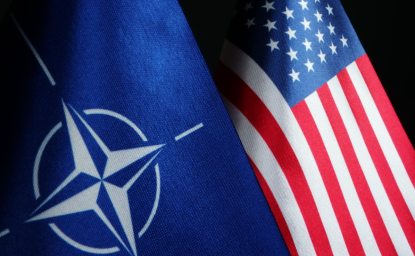
Criticism of NATO Ignores Its Economic Benefit to the US
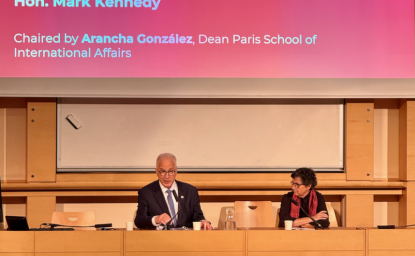
Leave Colbert in Paris, Embrace Churchill and JFK Instead
